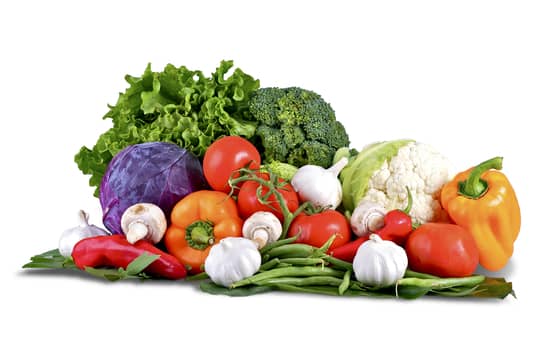
Trying to make sense of certain diet restrictions and figuring out what you’re “allowed” to eat can be difficult. It’s rarely simple and almost always overwhelming. Paleo and gluten-free is no different… until now.
Is Paleo gluten-free?
The Paleolithic or “Paleo” diet is gluten-free. The diet prohibits any products that contain gluten, including wheat, rye, barley, and other foods with gluten. Foods that are gluten-free, however, aren’t always Paleo approved. For example, sour cream is gluten-free but isn’t allowed on a Paleo diet.
You can see how it can become tricky to determine what you can and cannot eat. While the two are very similar, there are definitely some distinct differences.
Fortunately, I’ve got a simple trick you can use to rule foods in or out, regardless of whether you’re on a gluten-free or Paleo diet. I’ve included that below.
First, let’s take a look at each diet individually.
What is Paleo (and what does it have to do with gluten)
The Paleolithic diet, more commonly known as the Paleo diet, is a diet where you only consume foods that were found prior to the modernization of agriculture.
The diet is also referred to as the “Caveman diet” or “Hunter-gatherer diet”, due to the kind of foods you’re allowed to eat. Lean meats, eggs, vegetables, fruits, nuts and seeds, etc., essentially foods that haven’t been processed in any way.
It’s thought, we as humans, aren’t meant to eat the way we do today. The theory is our bodies haven’t adapted to all of the different and rapid changes that have been made in farming and food production.
Things like dairy, grains, and refined sugar aren’t digested by our body the same way more traditional foods are. It’s believed that these “newer”, more processed foods are the reasons for many of the ailments and illnesses we experience as a society, today.
This theory is known as the Discordance Hypothesis.
And, there’s a lot to be said about this theory. There are countless studies showing we don’t need, nor should we have, nearly as much refined carbohydrates and sodium as many Americans consume.
Another relatively new thing that’s found in many processed foods is gluten. Gluten is a naturally occurring protein that’s found in wheat, barley and other grains.
While gluten is safe for most people to eat, it can produce some serious side effects in certain individuals. Especially people who’ve been diagnosed with Celiac disease.
Celiac is an immune disease which prevents the small intestine from properly processing and digesting gluten. It can cause a variety of issues ranging from stomach pain and gas, to more serious symptoms like depression and nerve damage.
The benefit from switching to a Paleo diet, especially for someone with Celiac, is it excludes all forms of gluten.
So, if you’re practicing a strict, by-the-book Paleo diet you don’t need to be concerned about gluten. All foods that are approved for Paleo will not include any gluten, whatsoever.
Now, that said, all “gluten-free” foods are not necessarily approved for a Paleo diet. This is where it can get a little more complicated.
What is gluten-free (and how is it different from Paleo)
The gluten-free diet (GFD) is less of a diet and more of nutritional strategy. Really, the only requirement for following this plan is cutting out gluten from your diet.
Majority of the people that subscribe to a gluten-free diet experience difficulty when trying to digest the protein. Some may experience only mild discomfort while others experience a wide range of more severe symptoms.
The most common form of this issue is referred to as gluten intolerance, or gluten sensitivity. People with a gluten sensitivity are likely to experience the more temperate symptoms from gluten.
People who have more difficulty digesting gluten may find that they have Celiac disease, which can make processing gluten incredibly painful. The only way to determine whether you have Celiac is to see a doctor.
Regardless of your reason for jumping on the gluten-free train, it’s important to understand what you can and cannot eat. Fortunately, many brands have included gluten-free stickers or badges on their food making it pretty easy.
Still, it can take some practice reviewing nutrition labels and their ingredients.
Many raw foods, like those eaten on a Paleo diet (lean mean, eggs, vegetables, etc.), are most likely going to be gluten-free. The products that require a little more scrutiny are processed foods, particularly bread.
The issue with processed or commercially produced foods is they typically have a laundry list of ingredients. It’s very easy for a single ingredient with gluten to be hidden amongst the 30+ other ingredients.
It’s best to get into a habit of reviewing ingredient lists before adding the item to your shopping cart.
The difference between gluten-free and Paleo
Its easy to see why people can get confused when trying to determine whether a food is gluten-free or Paleo, or both… especially given how similar the two diets are.
Given that gluten is derived from wheat, which is a relatively modern addition to society, anything you’re allowed to eat on a Paleo diet is automatically going to be gluten-free.
So, from that standpoint, it’s pretty easy to be gluten-free if you’re practicing the Paleo diet.
That being said, if you’re on the Paleo diet it doesn’t mean you can eat every thing that’s labeled “gluten-free”.
There are a variety of foods which are gluten-free that have other ingredients not allowed on a Paleo diet. For example, yogurt and cottage cheese are gluten-free, but because they’re diary you’re not supposed to eat them on the Paleo diet.
In fact, most gluten-free products are not going to be suitable for someone on the Paleo diet.
Here is a list of foods that are gluten-free, but not Paleo:
- Brown rice
- Wild rice
- Milk
- Cheese
- Sour cream
- Certain alcohol
- Quinoa
- Oats
- Butter
- Yogurt
- Cottage cheese
- Soda
The list goes on…
You can see why trips to the grocery store can be overwhelming for someone who is on a Paleo diet. There is an easy trick, though, that can make those shopping trips a helluva lot easier.
How to tell the difference between Paleo and gluten-free (one simple trick)
This trick definitely isn’t a secret, it’s something that I’ve known for a long time. My mom actually turned me on to it, and I believe her mom shared it with her.
That said, this is a great strategy to use when going grocery shopping for a Paleo diet. And, to be honest, it’s a great strategy to use regardless which diet you’re practicing.
Drum roll, please…
Shop the edges of the grocery store!
Next time you’re at the grocery store, pay attention to where specific foods are located. You’ll notice that all the whole or “raw” foods are typically located around the perimeter, and all the processed foods are found on the inner aisles.
While it’s not a completely fool-proof way to determine whether or not you can eat it, it’s a great place to start.
Majority of the foods found around the edges are going to be allowed on a Paleo diet. Foods like lean meats, eggs, vegetables, fruits, etc… these are all found around the edges.
Now, where you need to be a little careful is when you get into the bakery and dairy sections.
If you’re somewhat familiar with the Paleo diet, you know things like milk, bread, and cheese are off limits. These foods are also found around the perimeter of the grocery store.
But, just knowing to steer clear of those sections make any trip to the grocery store much easier.
When shopping for a gluten-free diet, you can pretty much use the same strategy. Again, any foods approved for the Paleo diet are going to be gluten-free.
Now, if you find yourself in the bakery, or in some of the inner aisles of the grocery store, be careful!
The labeling of gluten-free foods is not mandatory. It’s ultimately up to the brand whether or not they choose to label products as such. So, make sure to shop with discretion.
Save yourself some of the headache and shop the edges of the grocery store!
Happy shopping!
